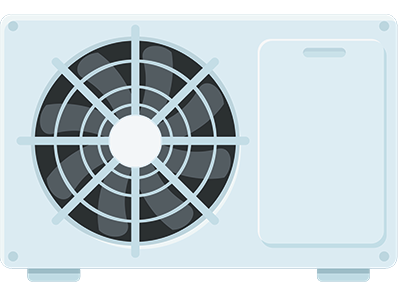Should I Buy a House with a Radon Mitigation System?
Radon is a common, odourless, invisible natural gas which rises from uranium in rocks and soil and can accumulate in buildings, where it can damage lung tissue, and may eventually cause lung cancer. When you're buying a home, radon risk is usually first flagged in your Environmental Search.
If you are looking at purchasing a home with a radon mitigation system, it is most likely that the radon levels were high enough to cause concern, but it is also most likely that the system removes the harmful gas to safe levels. In most cases, it shouldn't be a dealbreaker, but you'll need to accept that the system will need maintenance over the property's lifetime.
How does a radon mitigation system work to protect my health?
Radon Sump
A void is dug beneath the house, creating a low-pressure chamber that draws the gas out of the surrounding soil. This is channelled away from the house, often through an enclosed vent with a fan which expels the gas above eaves level, well away from any doors or windows where it could re-enter the property.
As a precaution, this method is often installed in new properties in radon-affected areas, ready to be used in case testing later shows it is necessary. Properties with a larger footprint may need more than one sump system.
You must check that the system is working periodically and ensure the fan and vents haven't become obstructed, and fans may need replacing after around ten years of use.
Positive Pressure System
A Positive Input Ventilation (PIV) system, or passive pump, is installed in the loft (or on the internal side of an external wall, if no roof void is present), which slightly elevates the pressure inside the building, preventing radon gas from being drawn into it.
The filters must be cleaned regularly (annually, at least) to prevent blockages, which would severely reduce the unit's performance and may ultimately lead to the motor burning out.
Before installation, a radon survey should have been carried out to design a mitigation system best suited to the property, to bring the levels below the action level.
How do I know the radon mitigation system is working properly?
Ask the current owners if they have completed a three-month radon test, and if so, ask for a copy of the report. If not, you may be able to request that they test before sale; however, this can cause undesirable delays in the transaction. Instead, you can discuss a radon bond, or retention, with your solicitor and test when you move in.
How can a Radon Bond protect me financially?
A radon bond is a financial contract between you and the seller to address radon issues discovered after the property purchase. Both parties agree on how the remediation costs will be covered if the mitigation system turns out to be faulty or inadequate in reducing the radon to an acceptable level.
Typically, the seller's solicitor holds an agreed sum from the purchase funds for 6 months, and any agreed costs are paid from this amount. Any excess is returned to the seller at the end of the agreed period.
A bond typically includes provisions for:
- 1Radon testing,
- 2Determining appropriate mitigation measures, and
- 3Allocating the financial responsibility of remediation
You may also be able to obtain bespoke insurance from the seller.
Should I still buy the house?
Our advice is always to conduct thorough due diligence. As long as you check that the system is effectively lowering the internal radon to acceptable levels, and/or you put a bond or retention in place to protect against any problems after you complete, there's no reason to pull out of the purchase.
You may even find homes with effective radon mitigation systems have lower resulting levels than untreated homes, which may fall above the target level, but below the action level.
Pros
- Reduced health risks
- Peace of mind
- Cost savings versus installing yourself after purchase
Cons
- System checks
- System maintenance
- Potential noise disturbance from fans
- Fixed, competitive legal fees with no hidden costs.
- Expert conveyancing solicitors with proven local knowledge.
- No Sale, No Fee protection for your transaction. Terms apply.
- On 99% of mortgage lender panels.
- Fast completions.
- We can solve any property challenge.
Caragh is an excellent writer and copy editor of books, news articles and editorials. She has written extensively for SAM for a variety of conveyancing, survey, property law and mortgage-related articles.
Andrew started his career in 2000 working within conveyancing solicitor firms and grew hands-on knowledge of a wide variety of conveyancing challenges and solutions. After helping in excess of 50,000 clients in his career, he uses all this experience within his article writing for SAM, mainstream media and his self published book How to Buy a House Without Killing Anyone.










